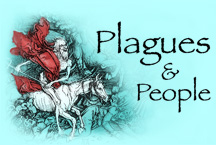Extra-Cantonment Zone, Camp Lewis, Washington
The Extra-Cantonment Zone extends about ten miles around Camp Lewis.
It includes six small towns with population varying from 200 to 700.
Two of the larger towns possess resident physicians, one a health officer,
but a large portion of the people live from ten to twenty-seven miles from
the services of a doctor. The population outside of the towns live
either on small farms, or work in the neighboring shipyards, mills or logging
camps, all depending on their daily labor. The school population
as taken last year numbered about 1,000 children in twenty-one school districts;
this year there is an increase of about one hundred.
The U.S. Public Health Service has special rules regarding health matters
in the zone, and a nurse is provided to care for the school children, reporting
all contagious diseases found, following up in the homes all absentees,
giving instructions regarding the welfare of the children, and making routine
inspections in the school room; and when the epidemic first made its appearance
we were making regular examinations of all children of pre-school age.
Here in the West we are very proud, and at times boastful of our climate,
which is exceedingly temperate, and when we read of the ravages of Influenza
in the East, we wondered how it would affect us. October 7th we had
our first case, a mild one at American Lake.... [Soon] cases were found
in all districts, and orders were given on October 18th for the closing
of all schools, which cut off a medium of infection, but also a source
of knowledge. The days succeeding the closing of the schools were
very hard, as so much time was wasted in finding the sick, instead of spending
it in caring for them....
There is a Ford machine provided for the nurse, which certainly helps,
but in this epidemic it was invaluable, as bundles of pneumonia jackets
were piled in the back seat, and containers of soup were carried to those
needing it. A nurse walking could not have done it....
We had no standard orders at first, but after the first few cases we
made the general rule as follows: pneumonia jackets for all the sick,
masks for the attendants, noting of temperature, cathartics, patients to
have plenty of fresh air and copious drinks. At first the patients
were carefully sponged, but with twenty calls to be made daily, many of
which meant whole families sick and no doctor, the sponges were given only
to those who needed it most. Patients were nursed three in a bed
and, where children were concerned, four to six in a bed. Doors were
left ajar for the nurse, and many good neighbors, unafraid, assisted in
washing dishes and in care of the sick.
As we look back over the past five weeks, which we would not like to
live over again, we are thankful for good health, so that we could help
these people in their time of need. Also, our patients see Uncle
Sam in a guise they have never seen him before; they may have been good
citizens before, but these experiences have not impaired their citizenship
at all.
Mistakes were made at the beginning of the epidemic. Patients
insisted upon getting up with disastrous results; it was noticed if they
were kept quite still, and supplied with plenty of fluid nourishment, along
with cathartics, even if the surroundings were not good, they did well.
During the coming winter we intend to follow up all recovered cases,
and do all we can to prevent tuberculosis and other diseases. |

